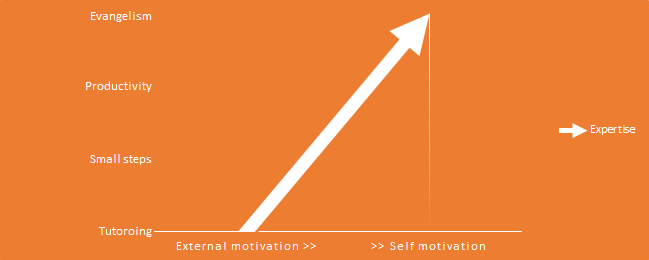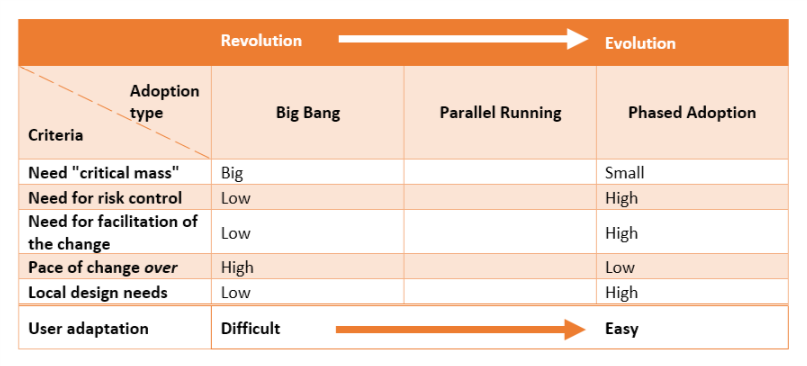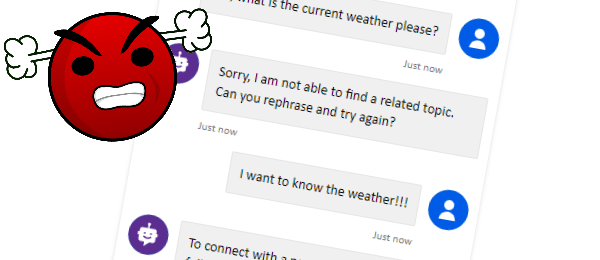
User Adoption issues in SharePoint and Office 365
Table of contents:
The topic is repeatedly discussed over the years. It doesn’t really rely on any specific IT system. Even more – the user adoption is a common word describing how fast and how likely users are getting familiar with and accept a new product, innovation, etc… Not in IT exclusively. It really applies to every segment of the market, where a product or service is being sold to the end-user. The faster user “buys” it, the faster ROI rises.
During the Collaboration Summit that has recently took place in Zagreb, I’ve attended Jussi Mori’s seminar where he was talking about that topic, trying to evaluate reasons for which users do not want to easily adopt new things and ways to help them working it out. This presentation inspired me to make a little more research on the topic, what resulted in writing this post.
Nevertheless, the post is going to be about the user adoption in IT especially, moreover – it will apply to the Microsoft products. To be even more precise – to SharePoint and the whole Office 365.
Why users hate SharePoint?
SharePoint is one of the most hated Microsoft’s products. Since its major transformation, with 2007 version, employees were loudly and widely complaining about working with it, wrongly blaming the tool, not the company, for their dissatisfaction and frustration.
Before the 2013 version was on the market, on April 2011 Microsoft was claiming that 78% of Fortune 500 companies is using SharePoint (source) and this numbers have definitely rose since then. It was being sold by Microsoft as some sort of a “swiss army knife”, which can be used by a company to build almost any software, starting on DMS, Intranets and Extranets, CRM, ERP, web portals, etc… However, SharePoint was still a rather complex and demanding system, not easily adapted by the most of business users, what combined usually with the “big bang strategy” of its deployment, really made it the no. 1 enemy for most of the employees being somehow “forced” to use it. A very nice summary of that times is a sentence from Benjamin Niaulin’s post:
“We torture SharePoint, trying to make it do what we want with features clearly not designed for it. Then we discard it and blame SharePoint.”
Going back in the history, the reasons why I could find so many frustrated posts and information in Google while searching for “I hate SharePoint” (there used to be even a blog about that), can in my opinion be divided into two groups: product, and company/ people related issues:
- Product related
- It is complex (reason: bad user adoption)
- It is slow (reason: usually bad configuration/ SQL related issues)
- It is “edgy”, the UI was not attractive (reason: users were not involved in design)
- It doesn’t provide the information user is looking for (reason: bad search configuration)
- It doesn’t work on mobile devices (reason: well, it wasn’ Now it does 😊)
- It is the Microsoft product (reason: bad PR 😊)
- Company/ people related
- People don’t want to feel stupid, are lazy and are afraid of a change
- The process of user adoption wasn’t conducted or it was done ineffectively
- No communication strategy, no usage strategy
- Lack of trainings, lack of informative meetings, lack of vision and rising awareness about capabilities of SharePoint
- It’s not attractive for new generations of employees: X and Y
- A lot of hidden costs, need to use 3rd party tools
- No management ownership and support
Regarding the Office 365 set of tools, users may not suffer the same frustrations they had with on premise SharePoints, but there are the new ones, mostly related to confusion. Plenty is no plague, at least so they say 😉 Regarding Office 365 I think the most common issues are:
- Users’ confusion – which tool to use to achieve that – many concurrent functionalities;
- Lack of usage vision, plan for rolling out to the users
- Again – the process of user adoption wasn’t conducted or it was done ineffectively – the tool was launched but there were no following up actions and moreover – no actions preceding it.
The solution? Do user adoption well
I think that the negative correlation between SharePoint and all the evil is a word of a past. The 2013 version was a big change, at least for the business users. The interface was change, functionalities enhanced, it became mobile and flexible. Also, since its productive launch in 2011, Office 365 is rapidly changing and modernizing to meet increasing market demands and expectations, gaining new applications and functionalities, creating a real digital workplace in every company.
Although the modern Microsoft applications are more and more self-explanatory companies cannot forget about doing a good user adoption.
What is user adoption?
The neat definition I found here says:
“User adoption is a situation in which users adopt a system that works to fill a specific need. They transfer from an old system and adopt a system that is newer, better, faster, more comprehensive, and altogether more efficient.”
Well it’s simple and describes the result, but the adoption itself is barely done by the user himself. It must be externally motivated in the beginning:
The first phases, the initial tutoring and first steps of the user in working with the new tool must be conducted under supervision and support from the right people – specialists, evangelists, trainers. During these days employee has to know who to ask once lost, to whom address his/ her doubts. Over the time, employee will get familiar with the application and will become self-reliant and hopefully, will start to teach and evangelize other employees.
User adoption strategies
There are at least three most general strategies (via Wikipedia) for doing the user adoption:
- Big Bang – I dislike this one the most, however in Poland it is the most common. Company decides to roll out new software and the whole scope is delivered to the end user at once.
If this strategy can ever end up success, it demands a huge commitment before: users must be informed, trained and have time to get familiar with the new product before they start using it productively. But even though there is a huge need to provide all adoption tools I will describe later. - Parallel Running – this strategy allows users to work, for a specific period, using the old tool they are familiar with, together with the new one. It allows them to individually find matches for doing the same things and adapt. It must be clearly communicated when the old system is going to be turned off as well as when they should start using only the new system for specific things.
- Phased Adoption – I guess the most “mature” approach where company and project stakeholders define the scope of functionalities of the new system to be delivered and rolled out in each phase, allowing smooth transition for users. The other way for this kind is to engage specific groups of employees (team, department) to use new system, not the whole company at once, so that the group of experts rises and assists others.
The table below presents how key factors in each adoption changes moving from the Big Bang to the Phased Adoption strategies (Eason, 1988):
How to adapt user adoption?
Tricky, isn’t it? 😊 User adoption can be find as a set of guidelines, suggestions, even as a framework but… must be used wisely. No matter which one you choose, consider that it should be done in 3 phases:
- Before
- During
- After
Launching the product.
Before
- Plan SharePoint/ Office 365 implementation. Discuss with the key decision makers which functionalities you will use (remember some are concurrent), what you want to achieve, what will you benefit;
- Plan the roadmap and communicate it openly to your users, involve communication department;
- Plan informative meetings during which experts will talk about the benefits from using SharePoint, growth of effectiveness, facilitation of work, share success stories and real-world examples;
- Involve key-users in designing the new system;
- Plan effective change strategy – teach WHY not only HOW etc…
- Cultivate the buy-in to involve all strategic stakeholders since the beginning and get their awareness and support;
- Consider taxonomy, information architecture;
- Consider gamification – this one is getting more and more popular – think of goals and rewards, and of course – how to measure them;
- Create feedback channel and communicate it to your users.
During
- Trainings – teach your key-users SharePoint/ Office 365 functionalities and capabilities;
- Make an ongoing informative campaign – show users what’s ahead in SharePoint, Office 365, how you can use it, your cases where SharePoint/ Office 365 will really help you;
- Involve users – gather information about worries and doubts – explain them;
- Again – involve users – but this time to gather information about bottle necks, issues they are facing using current tools. Then try to find solutions using SharePoint/ Office 365 to solve them. Create sort of issues-solutions knowledge base, where you can prove benefits from using SharePoint;
- Be open, do not discriminate, no question is stupid, etc… an open dialog is important.
After
- Leverage evangelists/ champions – monitor your users, try to find the most active/ involved, show them to others, ask them to become your evangelists, to help and teach others;
- Release the power – let your users to create and contribute within the defined rules;
- Measure and analyze usage of your SharePoint (using Auditing functionalities, usage statistics, in O365 – logs or go into 3rd party, eg. Piwik);
- Implement chosen gamification strategy;
- Conduct regular trainings, inform about changes and roadmaps in SharePoint/ Office 365;
- Encourage users to give their feedback, don’t let them feel as treaters or malcontents – those who are giving the feedback are the most engaged and valuable users!
A word about Office 365
SharePoint is just a drop in the ocean. All right, maybe not the ocean, but a lake, but still – switching to Office 365 you suddenly realize that the set of available applications is very large. Moreover – that they are, as I mentioned, sometimes concurrent with each other. Just take a look at this infographic:
Find your way in the Office 365-collaboration-tool-jungle (Groups, Teams, Yammer) with this valuable info graphic by @thatmattwade pic.twitter.com/ZQ1CTDCjrY
— Christian Glessner (@cglessner) June 10, 2017
And lots of others:
- Office 365 Periodic table: https://techcommunity.microsoft.com/t5/Office-365/New-infographic-Periodic-Table-of-Office-365/td-p/68275
- http://www.onpointsolutions.com.au/adoption-blog/2016/11/30/office-365-isnt-it-just-office-2106-in-the-cloud
- Benjamin Niaulin’s infographic: https://en.share-gate.com/blog/what-is-in-office-365
- Pinterest board: https://pl.pinterest.com/explore/office-365/?lp=true
What I mean is users can easily get lost if you decide to allow access to all of them. You can decide, which application should users use to do specific things and LEARN them, for example:
- To store files always use OneDrive
- To create communities, use SharePoint Team Sites
- To work on projects, create Microsoft Teams spaces
- To create a space for a specific product use Office Groups
- To post videos use Microsoft Stream
And so on… The key is to make a clear communication and provide guidelines to make your digital workplace in Office 365 really work efficiently.
Recently, one of the most confusing things that happened to Office 365 was the public roll out of the Microsoft Teams. Many of us (me as well) were thinking how it should be find regarding the Office Groups. There were many posts explaining it, I personally like this one the most. The other confusion may soon arise around Office Video vs. Stream, however it is said that the Video is going to be decommissioned. If you also have experienced users you may still face questions about the successors of SharePoint Designer and Infopath, etc…
However, on this “battlefield” you are not alone – Microsoft wants you and other companies to go into cloud, to move your business into Office 365. Not to mention that almost 80% of all licenses Microsoft sells in Western Europe are for Office 365. Anyway – Microsoft is providing a lot of tools to help you in your users’ adoption, ex.: “Office 365 Adoption Content Pack” or “Fast Track”, or “Office training resources”.
The adoption in Office 365 is easier in my opinion, and less risk-related, because you can always launch a beta for just a selected group of people and then buy another licenses for the others, so in case you realize “this is not the right tool for you” you can always retreat.
Final note
No matter which user adoption strategy you will choose and which tools will you use, be aware that even the best plan without monitoring can easily end up in a failure. In my opinion three most important factors, based on all my experience in launching SharePoint in organizations are:
- Learn, communicate and open channel for the feedback – encourage users to talk, that is the most valuable information you can get. Listen to all complaints and try to help;
- Have full support of the stakeholders, without it project has no solid foundations;
- Find and leverage evangelists – they are someone colleagues, thus are more trustworthy and credible 😊
I have also another advise – you are of course aware of the money your company needs to spend on SharePoint: infrastructure, licenses, 3rd party tools, external consultants. Even when talking about the Office 365 – licenses are bought for a year. At that moment, no one even considers a scenario of a withdraw – the commitment is to high, thus the project must be finished and product must be started used productively. If the user adoption, especially its early stages, is done wrong, you will hardly realize the approaching disaster. Once it appears, the costs you will then need to spend will be double that high as if spent before. Involvement of your employees during all stages of launching is crucial, to be sure your SharePoint is shaped the way they and your organization need it. If you launch it and then start shaping – then you will join the club of those, who hates SharePoint.
Some sources
Why users hate SharePoint
http://www.portalsolutions.net/blog/why-do-my-users-hate-sharepoint
http://www.portalsolutions.net/blog/some-days-i-hate-sharepoint-and-heres-why
Implement user adoption
https://www.itunity.com/article/10-tips-drive-user-adoption-2419
http://www.itbusinessedge.com/slideshows/best-practices-for-enhancing-sharepoint-adoption-01.html
https://www.brainstorminc.com/blog/id/10164/10-things-to-consider-in-creating-a-user-adoption-plan
http://get.coupa.com/rs/coupa/images/7-strategies-user-adoption.pdf





